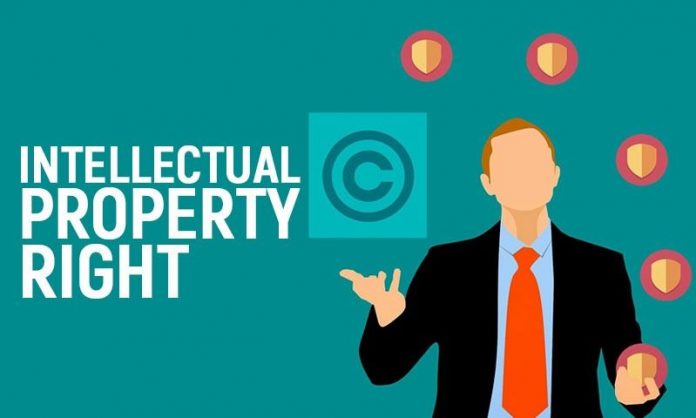This article was written by Monesh Mehndiratta, a student of BA LLB, Graphic Era Hill University, Dehradun. This article talks about IPR and then moves on specifically to copyright and patents and the difference between the two.
It has been published by Rachit Garg.
Table of Contents
Introduction
Intellectual Property Rights (IPR) deal with intangible property or the creations of human mind and intellect. According to Black’s Law Dictionary intellectual property means “a category of intellectual property rights which protects commercially valuable products of the human intellect”. The artistic works, ideas, creations, inventions, designs, symbols, names etc, are protected by the IPR law. It tends to give exclusive rights that a creator enjoys over his own original work for a certain period of time. Article 27 of the UDHR also mentions such rights. The two main historical events that led to its development are the Paris Convention for the Protection of Industrial Property in 1883 and the Berne Conventionon Protection of Literary and Artistic Works in 1886. In ancient times, there was no such mechanism to give recognition to the inventions, ideas, and artistic work done by the people. With innovation, economic growth and numerous discoveries, the need to safeguard people’s work was felt and taken into consideration. As a result, the country signed the TRIPS agreement (Trade Related Aspects of Intellectual Property).
Types of IPR
Following are the types of intellectual property rights:
- Copyright
- Patent
- Trademarks
- Trade secrets
Copyright
In India, the legislation relating to copyright is the Indian Copyrights Act, 1957. According to the Act, it means the exclusive right to do or authorize any act with regard to the work which forms the subject matter of the copyright given therein. This means that a person having copyright ownership has the right to reproduce the copies, circulate them in public, perform, translate or adapt the work, which can be literature, drama, film or an artistic work. Copyright subsists in head notes, editorial notes, etc. for case law reports. (Eastern Book Co. v. Navin J. Desai, 2001)
Criteria for the protection of a copyright
In order to qualify for copyright, the work must fulfill the following conditions:
- It should be original.
- It should be related to literacy, dramatic, musical, cinematograph film or sound recording work.
- If not the abovementioned work, it should be the work of an international organization declared by the Central Government as per Section 40 or Section 41 of the Act.
- It should be registered under the Designs Act, 1911, if it is a design.
- It should be work that falls under the subject matter of copyright as per the Act.
Subject matter of a copyright
Section 13-16 of the Act, provides all the work that are under the protection of copyright:-
- Literary work
- Dramatic work
- Musical work
- Cinematograph work
- Sound recording
- Artistic work
- Computer programme
- Architectural work.
In the case of Express Newspaper v. Liverpool Daily Post (1985), the plaintiff’s grids and five letter sequences were published in his paper for a competition. The defendant copied it on his own paper. The court held that it is an infringement of copyright as grids and five letter sequences contain useful information.
The words in the dictionary are also copyrightable as the compilation required hard work and skills. (V. Govindan v. EM Gopal Krishna Kone and Anr ,1923)
However, the following subjects have been excluded from the purview of copyright.
These are:
- Information of common place,
- A single word,
- Matter that is not in the form of a script,
- Facial
- Work done during the course of employment,
- Folk song
Ownership of a copyright
According to Section 17 of the Act, the author has the ownership of the copyright on the work. But there are certain conditions:
- If the work has been done during the course of employment by an employee, the ownership of the copyright will vest with the employer unless there exists an agreement for the same.
- If the photographs, paintings, portraits, engravings or cinematograph are made at the instance of someone else, he/she will be the first owner in absence of any agreement.
- In case of government work, the government will be the owner and vest ownership of copyright.
- If the work falls in the category of Section 41 of the Act, the international Organization will be the first owner.
- If the work has been published under the direction of any public undertaking, such public undertaking will be the owner.
- If a speech has been delivered in public, then the person who made the speech will be the first person and not the organizer or host of the show.
In the case of Vicco Laboratories and Anr v. Art Commercial Advertising Pvt. Ltd. (2001), the appellants were involved in the business of pharmaceuticals but had sponsored a serial prepared by the respondents and invested a huge amount of money. They filed a suit to claim copyright on the title and format of the serial and requested a permanent injunction restraining the respondents to make use of title or format further. The Supreme Court in this case held that the facts do not fall under Section 17 as the appellants were unable to prove the conditions given under the section and hence, dismissed the case.
Rights of an owner of a copyright
Following are the rights of an owner having a copyright on his/her work:
- The owner can reproduce the work in any material form whether physical or electronic,
- Issue copies of work to the public,
- Perform the work in public or communicate it to them,
- Make translations, adaptations or cinematograph film of the work,
- The owner can do the abovementioned work in case of computer programmes and he/she can also sell, or give it on commercial rent, or offer it for sale,
- The owner has the above mentioned rights in the case of artistic works as well.
- To make a copy of film or sell, hire, or communicate it to the public, in case of cinematographic film,
- To make a sound recording or offer it for sale, give copies, or communicate it to the public,
- Assign the copyright,
Duration of a copyright
- According to Section 22 of the Act, the duration of copyright in the country is for 60 years counted from the next year of the owner’s death, which means the lifetime of the owner + 60 years.
- In case the author is not known, the copyright subsists for a period of 60 years from the year of publication.
Patent
It is a right exclusively granted for the invention of a new product or a process or technique that offers a better way in production of any product. They also form a part of incorporeal rights. The patents were introduced in India by the Indian Patents and Designs Act, 1911, which was later amended and modified by another act of 1970, which was again amended in 2005 to meet the needs and demands of society. The amendment repealed the exclusive marketing rights (EMRs) and replaced them with a compulsory license.
Kinds of patents
Product Patents
These are the patents on a product invented by a person and cover in their ambit all uses of the product. It gives monopoly rights over a physical right irrespective of the method used in its production.
Process Patents
It gives monopoly rights and protection to a specific process or method used in the production of a thing. It is applicable in a situation where the product is known or some of its methods are known but a person has devised entirely new methods for its production.
Hybrid Patents
It is a combination of both product and process patents. For example, a product by process patent. In this, the protection lies in the steps involved in the production of a product.
Patents of Addition
These provide the owner with rights to make alterations, additions, or improvements to his patented invention. The term of this patent is the remaining period of the patent of the original invention. It is granted by the Controller of Patents under Section 54 of the Indian Patents Act, 1970.
Secret Patents
It means that the government, if it thinks fit that the invention is such that it is important for the safety or defence of the country, may direct the person to apply for secret patents.
Dependent Patents
A patent which cannot be exercised independently and needs the use of an earlier patent is known as dependent patents. Such patentees can apply for a licence to use earlier patents under Section 91 of the Act.
Petty Patents
It is a patent over a new configuration or design of an already patented product. The term of such a patent is shorter than that of an independent patent. In India, there is no such patent.
Criteria of Patentability
In order to get patents right over an invention, the criteria must be fulfilled:
New invention
Section 2(1)(j) of the Act defines invention as “a new product which involves an inventive step and is capable of being used in the industry.” However, mere discovery of a new substance not increasing the efficacy is not patentable as per Section 3(d) of the Act. Section 3 and Section 4 of the Act provide the list of all the matters that are excluded from patents, i.e., non-patentability:
- Frivolous invention
- Inventions against public morality
- Mere discovery
- Admixing the mixtures
- Duplicating the services
- Method of agriculture or horticulture
- Methods to treat disease
- Biologication process used in reproduction of living beings.
- Mathematical or computer programmes which are simple
- Aesthetic Creation
- Any mental act
- Topography of integrated circuits
- Traditional knowledge
- Atomic Energy.
In Novartis Ag v. Union of India (2013) popularly known as the Novartis case, the Supreme Court held that mere discovery is not an invention and laid down certain principles for pharmaceutical patents. It was held that for patents in this area, inventions had to undergo tests apart from the criteria of patentability. One of them is the efficacy test.
Novelty
It is defined under Section 2(l) of the Act. It is the basic requirement for the patent that the invention should not have been published earlier in any form and made available to the public.
Inventive step
It also means the non-obviousness of any invention. Section 2(1)(ja) of the Act defines the term inventive step. The definition implies that if the invention is obvious to any person then it does not fulfill the criteria of patentability.
Industrial application
It is defined under Section 2(1)(ac) of the Act. It means that if an invention is in abstract form, it cannot be used in the industry and will lose its application. Thus, it is necessary that the invention has a capability of industrial application.
Rights of a Patentee
- The patentee has a right to sell, use or distribute the patented product. It is an exclusive right of the patentee to use the patent in any manner.
- If the patentee wishes, he/she can transfer his rights of patent or licence to someone else as a consideration.
- He/She can also surrender the rights.
- In case of any infringement of patents, the patentee can sue or file a suit against a person infringing his rights.
Duration
Patents in India are the monopoly rights given for a specified time period of 20 years from the date of application to a person who has invented something which is not excluded under Section 3&4 of the Act.
Difference between copyrights and patents
| S.no. | Points of difference | Copyrights | Patents |
| Act | The Indian Copyrights Act, 1957 | The Patents Act, 1970 | |
| Meaning | It means an exclusive right to do or authorize someone to do any act, with regard to the work which is the subject matter of the copyright given in the Act | It is a right which is exclusively granted to a person for any invention not excluded under the Act. | |
| Criteria | Original Related to literacy, dramatic, musical, cinematograph film or sound recording work. If not the above mentioned work, it should be a work of international organization declared by the Central Government as per Section 40 or Section 41 of the Act. It should be registered under the Designs Act, 1911, if it is a design. It should be work which falls under the subject matter of copyright as per the Act. | New inventionNoveltyInventive step Industrial applicationNot excluded under the Act. | |
| Duration | Lifetime of the owner + 60 years. | 20 years from the date of application. | |
| Rights of Owner | Reproduce, sell, issue copies, perform the work, communicate to the public etc. | Right to sue in case a person infringes the rights, surrender, sell, export etc. | |
| Subject matter | Literary workDramatic workMusical workCinematograph workSound recordingArtistic workComputer programmeArchitectural work | Any invention of a product or methods to produce a product or any other invention which meets the basic requirements and not excluded as per Section 3&4 of the Act. | |
| 7. | Excluded matters | Information of common place,A single word,Matter that is not in the form of script,FacialWork done during course of employment,Folk song | Frivolous inventionInventions against public morality Mere discoveryAdmixing the mixturesDuplicating the servicesMethod of agriculture or horticultureMethods to treat diseaseBiologication process used reproduction of living beings. Mathematical or computer programmes which are simpleAesthetic CreationAny mental actTopography of integrated circuitsTraditional knowledge Atomic Energy |
Conclusion
There are many types of intellectual property rights. Some of these are copyrights, patents, trademarks, trade secrets, etc. Copyright is dealt under the Indian Copyrights Act, 1957 whereas the concept of patents is dealt by the Patents Act, 1970. For both the types of IPRs, there is certain criteria which has to be fulfilled in order to enjoy the benefits. However, they differ to a great extent. Patents deal with inventions, while copyright deals with the creation of ideas and original works of the author, whether in literature, drama, music, art etc. Other differences have been explained in the article.
Frequently Asked Questions (FAQs)
- Which act deals with copyright?
The Indian Copyrights Act, 1957 deals with copyrights.
- What are the requirements for applying for copyrights?
In order to qualify for copyright, the work must fulfill the following conditions:
- It should be original.
- It should be related to literacy, dramatic, musical, cinematographic, or sound recording work.
- If not the above mentioned work, it should be a work of international organization declared by the Central Government as per Section 40 or Section 41 of the Act.
- It should be registered under the Designs Act, 1911, if it is a design.
- It should be work which falls under the subject matter of copyright as per the Act.
- What all subject matter are non-patentable?
Section 3 & 4 of the Patents Act, 1970 gives the list of subject matter excluded from patents.
- Frivolous invention
- Inventions against public morality
- Mere discovery
- Admixing the mixtures
- Duplicating the services
- Method of agriculture or horticulture
- Methods to treat disease
- Biologication process used in reproduction of living beings.
- Mathematical or computer programmes which are simple.
- Aesthetic Creation
- Any mental act
- Topography of integrated circuits
- Traditional knowledge
- Atomic Energy
- What are the rights of a patentee?
- The patentee has a right to sell, use or distribute the patented product. It is an exclusive right of the patentee to use the patent in any manner.
- If the patentee wishes, he/she can transfer his rights of patent or licence to someone else as a consideration.
- He/She can also surrender the rights.
- In case of any infringement of patents, the patentee can sue or file a suit against a person infringing his rights.
References
- https://www.legalwiz.in/blog/all-you-need-to-know-about-copyright-registration#:
- https://copyrightalliance.org/faqs/what-is-copyright/
- https://www.wipo.int/patents/en/
- https://www.mondaq.com/india/patent/
- https://blog.ipleaders.in/non-patentable-inventions/
Students of Lawsikho courses regularly produce writing assignments and work on practical exercises as a part of their coursework and develop themselves in real-life practical skills.
LawSikho has created a telegram group for exchanging legal knowledge, referrals, and various opportunities. You can click on this link and join:
Follow us on Instagram and subscribe to our YouTube channel for more amazing legal content.
 Serato DJ Crack 2025Serato DJ PRO Crack
Serato DJ Crack 2025Serato DJ PRO Crack











 Allow notifications
Allow notifications



